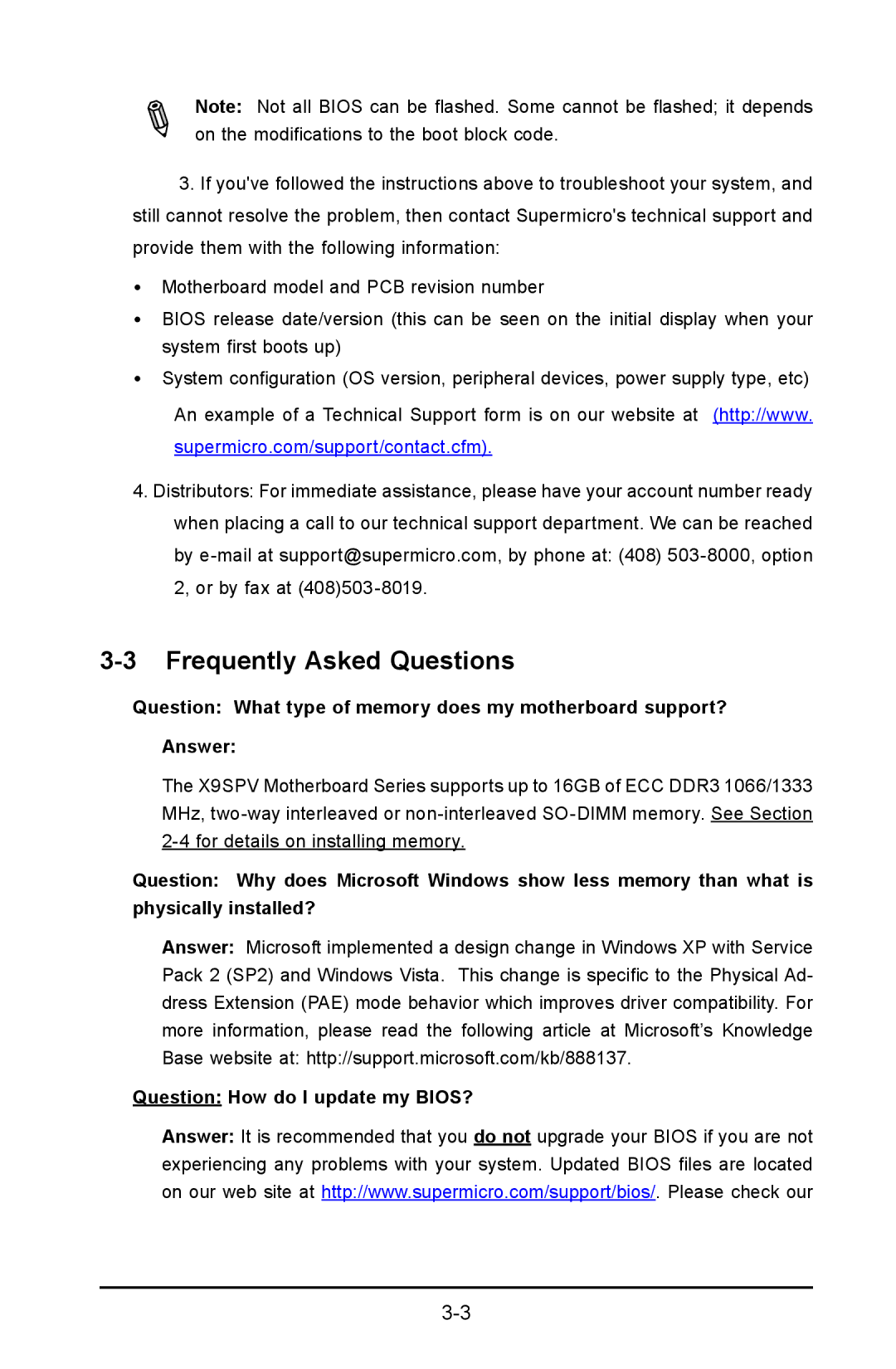
Chapter 3: Troubleshooting
Note: Not all BIOS can be flashed. Some cannot be flashed; it depends on the modifications to the boot block code.
3.If you've followed the instructions above to troubleshoot your system, and still cannot resolve the problem, then contact Supermicro's technical support and provide them with the following information:
•Motherboard model and PCB revision number
•BIOS release date/version (this can be seen on the initial display when your system first boots up)
•System configuration (OS version, peripheral devices, power supply type, etc)
An example of a Technical Support form is on our website at (http://www. supermicro.com/support/contact.cfm).
4.Distributors: For immediate assistance, please have your account number ready when placing a call to our technical support department. We can be reached by
3-3 Frequently Asked Questions
Question: What type of memory does my motherboard support?
Answer:
The X9SPV Motherboard Series supports up to 16GB of ECC DDR3 1066/1333 MHz,
Question: Why does Microsoft Windows show less memory than what is physically installed?
Answer: Microsoft implemented a design change in Windows XP with Service Pack 2 (SP2) and Windows Vista. This change is specific to the Physical Ad- dress Extension (PAE) mode behavior which improves driver compatibility. For more information, please read the following article at Microsoft’s Knowledge Base website at: http://support.microsoft.com/kb/888137.
Question: How do I update my BIOS?
Answer: It is recommended that you do not upgrade your BIOS if you are not experiencing any problems with your system. Updated BIOS files are located on our web site at http://www.supermicro.com/support/bios/. Please check our
